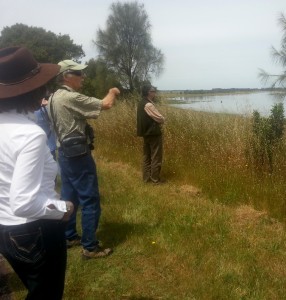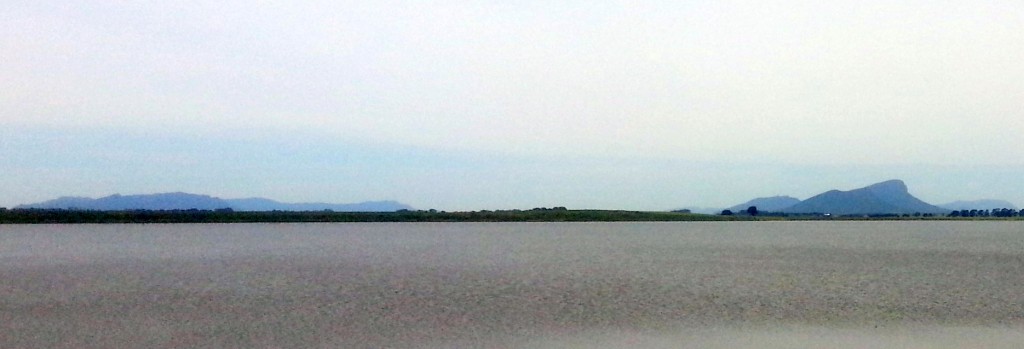Brolga Recovery Group Meeting
Last Wednesday I attended the Brolga Recovery Group Meeting in Hamilton. We were hosted by the Southern Grampians Shire Council at the Hamilton Institute of Rural Learning. After the group meeting, I presented a quick summary of the Wetland Restoration on Private Land project and then Skott Stark, the Natural Resource Management Officer for the Council, gave us an overview of Council wetland projects including the Grange Burn wetlands and Lake Hamilton.
The afternoon field trip kicked off with a quick visit to the Grange Burn wetlands. These wetlands were constructed on the orginal Grange Burn watercourse following the purchase of grazing land in 2001. The project involved the construction of open water sections and, in combination with revegetation, has resulted in an aesthetically pleasing and important wildlife refuge close to the town. We also learnt that 70 to 80% of Hamilton’s urban runoff is actually intercepted and effectively treated through these wetlands – an amazing example of ecosystem services!
For the rest of the afternoon we were treated to a tour of some of the lakes and wetlands which surround Hamilton. Dr Rod Bird, from the Hamilton Field Naturalists Club, provided a fantastic overview of some of his favourite wetlands. We visited Lake Linthlithgow and Krause Swamp before crossing the Hamilton Highway to drop by Soldiers Swamp, where the growlers were in full voice. The tour concluded at Tabor Swamp Wildlife Reserve where a levee has been constructed to return wetland habitat to a section of the otherwise drained Buckley’s Swamp.

Dr Rod Bird discussing revegetation and birdlife at Lake Linlithgow
Lake Linlithgow falls within a cluster of large wetlands between Hamilton and Penhurst in western Victoria. This complex contains a diversity of wetland types including the saline Lake Kennedy, the fresher Bullrush Swamp as well as numerous other ephemeral systems.
Lake Linlithgow is approximately 1000 hectares in size and ranges from fresh to brackish depending on how much water it is holding, in most years the depth ranges from 0.5 to 2.5 meters. It is a terminal lake, being fed by Boonawah Creek to the east. Dr Bird has compiled a detailed and informative overview of the history, flora and fauna of Lake Linlithgow and associated wetlands and it is available online.
The site is a wonderful natural asset and is a great demonstration of a transition from grazing to conservation. It has also benefited from strong partnerships between the Hamilton Field Naturalists, Parks Victoria, Glenelg Hopkins CMA and Conservation Volunteers Australia in substantial revegetation outcomes.

Bullrush Swamp with the distant Grampians
One of the lasting impressions from last week was that there is so much in our own backyards that we are yet to discover. I am certainly planning on making more of the opportunities and adding some spontaneity to my weekend plans. There is also some great information online now, such as through the Hamilton Field Naturalist Club’s website, that can help you arrive well informed.


